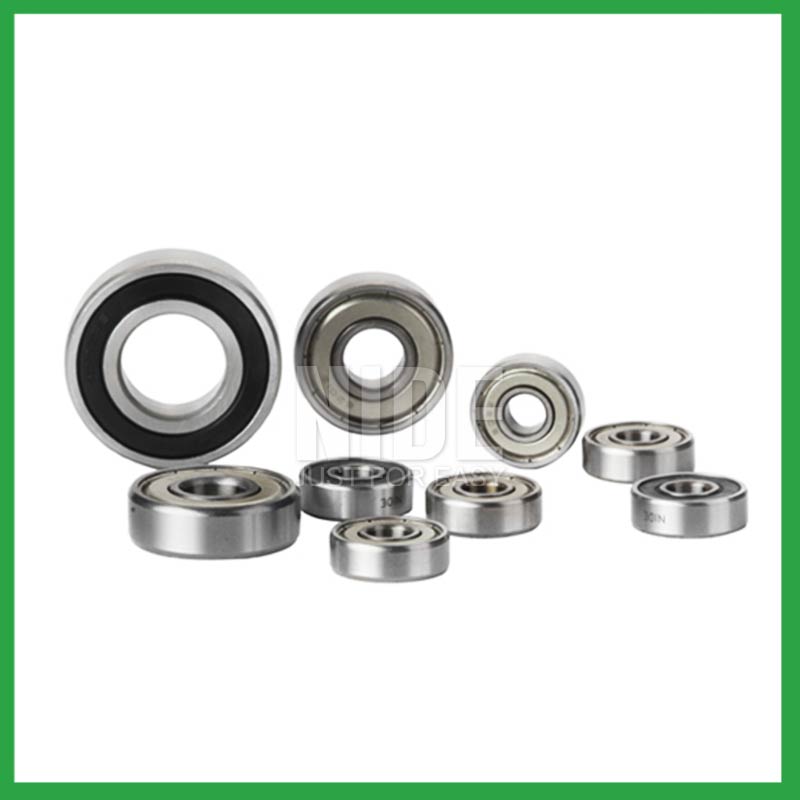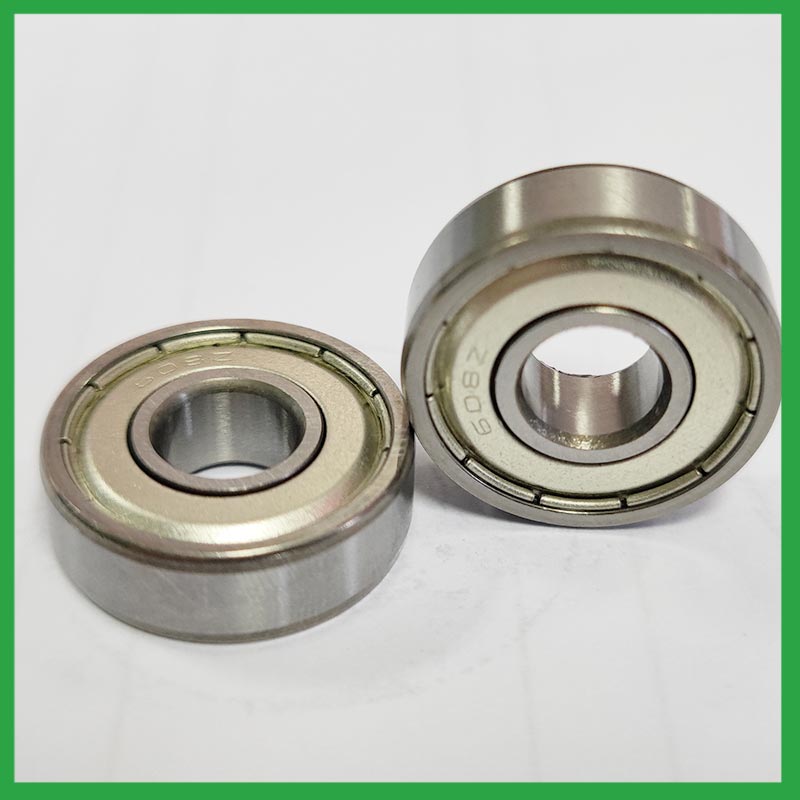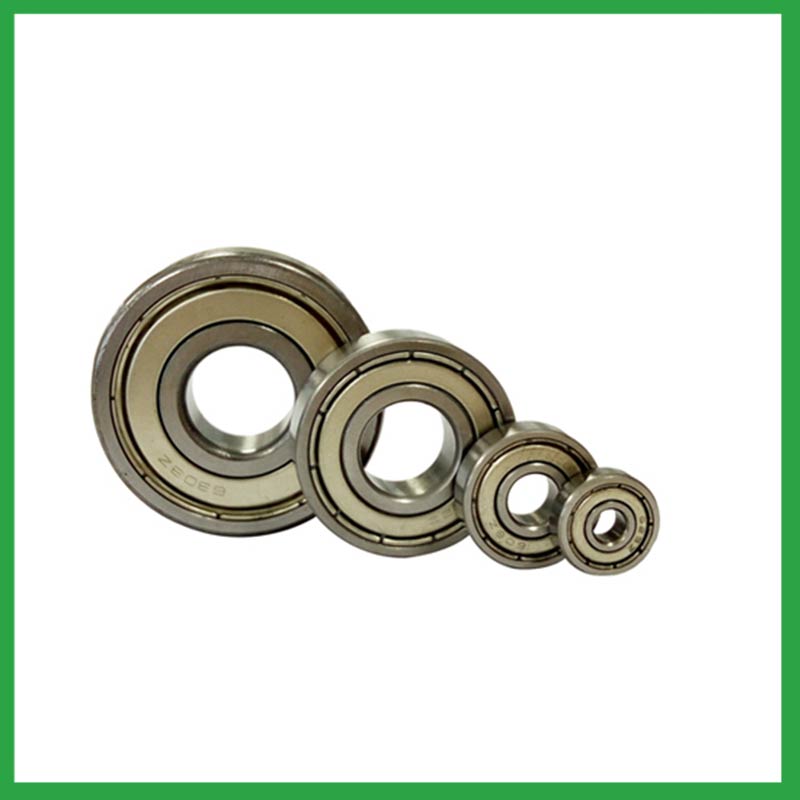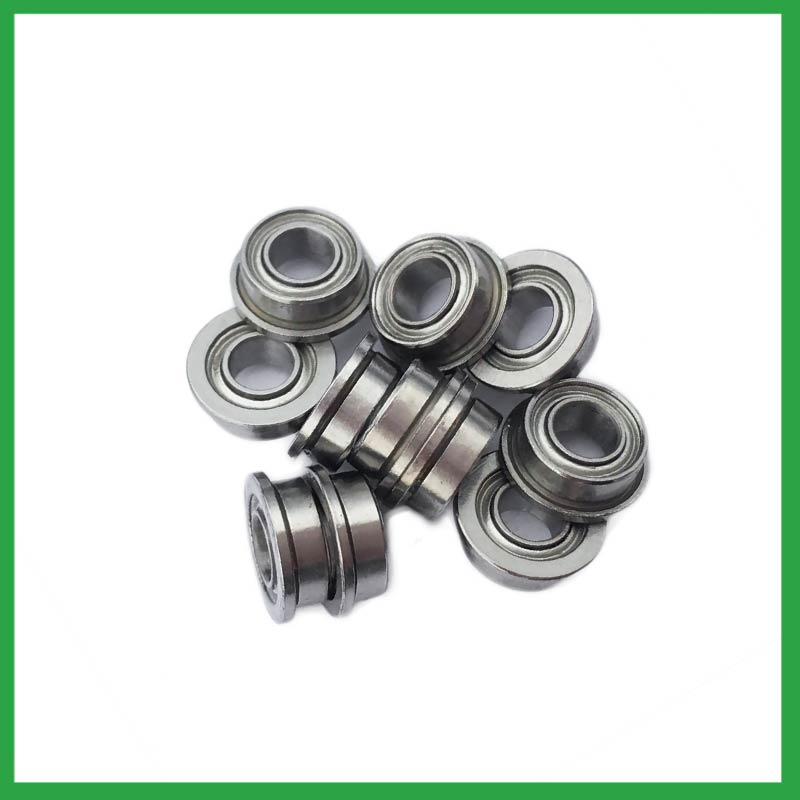PRODUCTS
CONTACT US
Ningbo Nide International Co., Ltd.
一一
· Contact person:Jack Zeng
· Mob/Whatspp/WeChat:0086-13738869026
· Email:emarketing@nide-group.com;marketing4@nide-group.com
· Add:No. 169, Wohushan Road, Daqi Subdistrict, Beilun District, Ningbo, China

Nide team could manufacture ball bearing as per customer’s drawing and samples.
If customer only has samples, we could also design drawing fo r our customer.
We also provide customized service.
Our ball bearing is widely applied the different industrials.
Haishu Nide International Co., Ltd was established in 2010, specializing in the development of precision customized bearings and sales of branded bearings. Provide overall bearing solutions for all customers and assist them in product development. In addition to providing various bearings that comply with international standards and specifications, we also provide services for motor manufacturing technology consultants, project support, and turnkey projects. The company's main products include: ball bearing,fan,commutator,magnet,carbon brush,shaft,thermal protector, etc.
In addition, we provide non-standard bearings according to customer needs and are committed to providing the widest range of services.Our main application areas are air condition motor,fan motor,servo motor,water pump motor,BLDC motor,washing machine motor,electric bicycle motor,compress motor and other industries.Reliability, responsibility and quick reaction help Nide to win the worldwide customers’ confidence seccesively, so far Nide has supplied products to its customers more than 50 countries.

| Parameter | Information |
| Product Name | front ball bearing |
| Brand Name | Nide |
| Place of Origin | Ningbo,China |
| Type | Ball |
| Material | ceramics, etc. |
| Sample | Avaible |
| Warranty | 3months-1year |
| Lubrication | Dry/ Oil |
| Application | machine tools,food processing machinery, etc. |
| Port | Ningbo/Shanghai |
| Size(mm) | customize |
| Export Country | Argentina,Brazil,South Korea,Martinique,Grenada,Jordan,Jan Mayen...etc |
| Export region | Europe,Oceania,Africa... |
| Certification | ISO 9001 Certification,CE-stator coil lacing machine,CE-stator coil forming machine,etc |
| Precision Rating | as per customer's requirement |
| Feature | Simple structure,Low Noise...etc |
| Packaging Details | Suitable for sea transportation |
| Color | gray+customized |
| Seals Type | Rubber seals |
| Service | Prompt Delivery |
| Supply Ability | 100000-500000 Piece/Pieces per Month |
| Lead time (days) | 15-20 (To be negotiated) |
Please note: The above table data is for reference only. For specific information, please contact us.
front ball bearing require thrust for installation, which can be achieved by using a combination ring made of steel sleeve and transmission rubber, or by using an adjustment plate to tighten the bolt to form a combination ring installation structure.
Before use, the model, size, and design of the ball bearing should be confirmed to ensure suitable application;
During installation, the installation load of the ball bearing should be minimized as much as possible to avoid unnecessary damage;
The bearing shaft and the bearing frame should be stable at the same time to avoid excessive tension.
Ball bearings have many advantages, making them highly competitive in the market.
Firstly, they are very durable and have good wear performance, making their service life longer than many other types of bearings.
Secondly, they are easy to install and can provide low friction performance in various applications.
Thirdly, they require a relatively low level of maintenance, making them cost-effective.
In addition, compared to many other types of bearings, their purchase cost is relatively low, making them an economical choice.




front ball bearing---FAQs Guide
2.How do front ball bearing handle radial loads, axial loads, and combined loads, and what are their load-carrying capacities?
3.Are there front ball bearing designed for use in critical medical equipment?
4.What is the typical noise level associated with front ball bearing, and how are noise-reduction techniques applied?
5.Are there hybrid front ball bearing that combine steel rings with ceramic balls to optimize performance in demanding applications?
6.How do sealed front ball bearing prevent the ingress of contaminants and extend the bearing's service life?
7.Are there specific front ball bearing designed for applications in the aerospace and aviation industries, and what standards do they adhere to?
8.What are the standard sizes and dimensions of front ball bearing?
9.Are there ongoing research and development efforts aimed at improving front ball bearing materials, designs, and lubrication techniques?
10.What are the considerations for selecting sealed or shielded front ball bearing to protect against contamination and retain lubrication?
11.What are the common materials used in front ball bearing manufacturing?
1.How do manufacturers ensure the quality and reliability of front ball bearing through material selection and precision machining?
High-precision measuring instruments, such as micrometers and gauges, are used to check the dimensions of the rings and balls to ensure they meet tight tolerances. Surface Finish Inspection: Surface finish is assessed using profilometers to ensure the required smoothness and low friction characteristics.
2.How do front ball bearing handle radial loads, axial loads, and combined loads, and what are their load-carrying capacities?
The type of bearing used also varies between these loads. While deep-groove front ball bearing are better equipped to handle radial loads, thrust ball bearings are designed for axial loads. However, it's essential to note that most bearings, such as angular contact ball bearings, can handle both radial and axial loads.The Bearing Static Capacity, Co, is the maximum load that can safely be applied to a non-rotating bearing that will not cause subsequent bearing operation to be impaired. It is based on calculated contact stress at the center of the most heavily loaded rolling element where it contacts the Inner Race.
3.Are there front ball bearing designed for use in critical medical equipment?
Precision front ball bearing are among critical components in medical devices that are vital to ensuring patient safety. Correct choice of suitable ball and ring materials and the right product design can ensure high-precision bearings — and medical devices — have a long service life.
Precision bearings are used in a wide variety of medical devices including surgical power tools, ventilators and heart pumps — and patient safety depends on them all. Whatever the device, there is an onus on medical device original equipment manufacturers (OEMs) to ensure that the right type of bearings are chosen, and fit precisely into the application.

4.What is the typical noise level associated with front ball bearing, and how are noise-reduction techniques applied?
To measure in accurate way the front ball bearing noise under rotation during their manufacturing process is a key activity particularly in the production of medium, small and ultra-small deep groove ball bearings. This capability in bearings noise analysis has become the real distinguishing element between a standard bearings noise equipment and a superior class one.
The various types of vibration and sound in rolling bearings can be grouped in four main categories: structural, manufacturing, handling and other. The structural vibration consists mostly of race, click, squeal and cage noise: it can be continuous or intermittent depending on specific cases. The manufacturing vibration is instead related to the waviness noise generated by the geometrical imperfections of inner and outer ring and of rolling elements, being always continuous in nature. The so-called handling vibration is normally associated with flaw and contamination and is generating – in most of the cases – irregular noise. Then there are other types of vibrabition that include noise generated by sealing and lubricant (irregular) or by runout (continuous).
5.Are there hybrid front ball bearing that combine steel rings with ceramic balls to optimize performance in demanding applications?
Hybrid Ceramic front ball bearing. Ceramic ball bearings (also known as hybrid bearings) are the one component that'll easily optimize the performance of your application. Hybrid bearings have ceramic (silicon nitride, Si3N4) balls and 52100 bearing steel rings.
6.How do sealed front ball bearing prevent the ingress of contaminants and extend the bearing's service life?
Contact seals are a type of seal where the sealing lip physically touches the inner raceway of the front ball bearing. They create a narrow line or zone of contact that forms a barrier to prevent the escape of lubricants and the ingress of contaminants. Because the seal keeps dirt and other contaminants out, it can offer a longer operating life of the bearing or prevent premature bearing failure. Sealed bearings can be considered lubricated for life, which eliminates the need for a relubrication process.

7.Are there specific front ball bearing designed for applications in the aerospace and aviation industries, and what standards do they adhere to?
Airframe control front ball bearing are specialized bearings tailored for aircraft structures, particularly control systems and surfaces. Designed for low-speed oscillatory applications, they offer precision and support, effectively managing misalignments and flight-induced stresses.
Airframe Control bearings are lightweight, corrosion-resistant, grease-lubricated, and are sealed on most occasions. They come in precision grades for running accuracy.
8.What are the standard sizes and dimensions of front ball bearing?
front ball bearing size charts are widely available, and can be used to find the measurements of a specific bearing. Series 6200 and 6300 are the most commonly used, and typically range from 10 x 30 x 9 mm (. 394 x 1.181 x . 354 in) to 150 x 320 x 65 mm (5.906 x 12.598 x 2.559 in).
9.Are there ongoing research and development efforts aimed at improving front ball bearing materials, designs, and lubrication techniques?
A custom front ball bearing can satisfy almost any customer’s needs. Your application may need a needle roller or ball bearing, a radial or angular contact design, a plain carbon steel bearing with anti-corrosion coatings or stainless steel, a thrust bearing or a spherical bearing, tight or loose radial play, sealed or non-sealed designs

10.What are the considerations for selecting sealed or shielded front ball bearing to protect against contamination and retain lubrication?
First, the environment in which your front ball bearing operate in can help you identify potential contaminants, allowing you to select your shields or seals accordingly. For example, shielded bearings have a gap that can allow finer contaminants or water from washdown applications to enter the bearing and get into the raceways.The challenge for sealing bearings is to seal the bearing by protecting the bearing from contaminants and running efficiencies.
11.What are the common materials used in front ball bearing manufacturing?
Most front ball bearing are made of a type of steel known as high carbon chromium steel, often called chrome steel. This is used for reasons of cost and durability. Bearings are also made from other materials such as stainless steel, ceramics and plastic.

